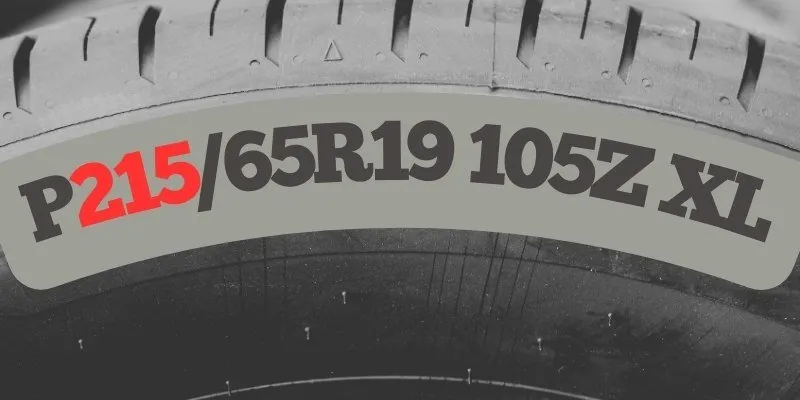What Does the First Number Mean on Tire Size?

Have you ever looked at the side of your car’s tire and wondered what all those numbers mean? The first number in a tire size, such as 205/55R16, represents the tire’s width in millimeters.
This measurement, from one sidewall to the other, is crucial in determining the tire’s performance and compatibility with your vehicle.
Understanding Tire Width
Tire width plays a significant role in your vehicle’s handling, stability, and overall performance. A wider tire offers more contact with the road, providing better traction and handling in dry conditions.
However, wider tires also tend to have a shorter sidewall, which can result in a firmer ride and increased vulnerability to road imperfections.
Imagine you’re shopping for new shoes. You wouldn’t buy a pair that’s too narrow or too wide for your feet, right? The same principle applies to tires. Selecting the appropriate tire width ensures optimal performance and a comfortable ride.
How Tire Width Affects Performance
The width of your tires can greatly influence your driving experience. Wider tires, such as those found on sports cars, offer improved cornering and acceleration due to their increased contact patch with the road.
This extra grip can be especially beneficial on dry, twisty roads or at the track. On the other hand, narrower tires are often found on eco-friendly and compact cars.
These tires have a smaller contact patch, which reduces rolling resistance and improves fuel efficiency. Additionally, narrower tires are lighter, contributing to better fuel economy and faster acceleration.
Matching Tire Width to Your Vehicle
When replacing your tires, it’s essential to choose a size that matches your vehicle’s specifications. Consult your owner’s manual or the placard on your driver’s side door jamb to find the recommended tire size for your car.
Deviating from the recommended tire width can lead to issues such as poor handling, increased wear, and even safety concerns. It’s like trying to fit a square peg in a round hole – it’s not a good idea!
Real-World Examples
To better understand tire width, let’s look at some real-world examples:
- A Mazda Miata, a popular sports car, typically comes with 205/50R16 tires. The 205 represents a tire width of 205 millimeters, providing excellent handling and grip for spirited driving.
- A Toyota Prius, known for its fuel efficiency, often uses 195/65R15 tires. The narrower 195-millimeter width helps reduce rolling resistance and improve fuel economy.
- Many SUVs and trucks, such as the Ford F-150, use wider tires like 275/60R20. The wider 275-millimeter tires offer better stability and traction, especially when hauling heavy loads or navigating off-road terrain.
Conclusion
In conclusion, the first number in a tire size represents the tire’s width in millimeters. This measurement is crucial in determining the tire’s performance, handling, and compatibility with your vehicle.
When replacing your tires, always choose a size that matches your car’s specifications to ensure optimal performance, safety, and comfort.
By understanding tire width and how it affects your driving experience, you can make informed decisions when selecting new tires for your vehicle.
So, the next time you’re at the tire shop, you’ll be able to confidently choose the right size for your car and driving needs.

Meet Caitlin McCormack, a Tire Size Expert and Blogger Passionate About Everything Related to Tires. With Years of Experience in the Tire Industry, Caitlin Has Become an Expert in Tire Sizes and Their Impact on Vehicle Performance.
